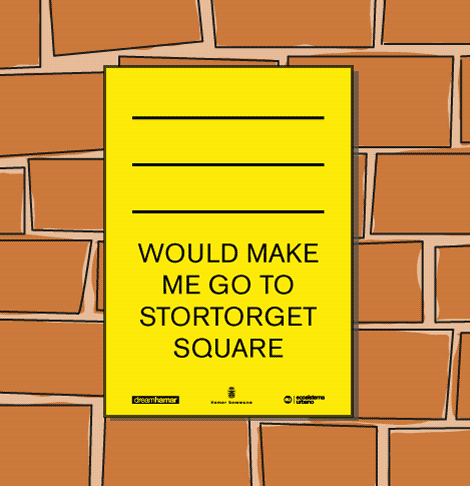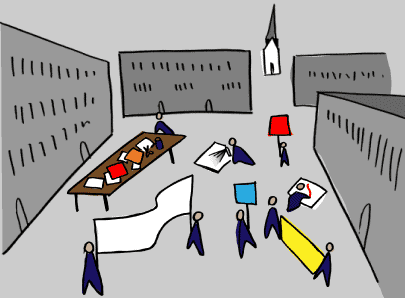Dreamhamar is an enriching experience. I had the opportunity to speculate about the design of a big public space situated 2095 km from my home. Together with Ethel and Paco, Hazem, Sara, Susana, Fabrizio, Matias, Limerick students, Francesco and Urska, I feel to have run a path. At the beginning, I didn’t know anything about Hamar, a little about public space planning but I had a big interest urbanism and collective design process. Thanks’ to the Ecosistema Urbano preliminary design booklet, we had the opportunity to inquire the city, to study the square’s architecture and its position in the city centre, the climate in different seasons and much more. Dreamhamar blog gave us the opportunity to capture some inhabitants expectations and ideas about the design of the square. Other participant’s posts stimulated us having a virtual-walk in Hamar thanks’ to Google streets or the City digital museum achieve. Ethel and Paco gave us a lot of input in their open lectures, showing how the disciplinary boundaries blur affects urban design. Our weekly hangout has been the moment where to encounter other participants ideas and doubts about the project itself, about our proposals or about the architecture role in 2011. We came out with a lot of ideas, doubts, proposals, questions, and with the knowledge of a new method of working, open network design. The different geographical, generational and professional provenience of participants assured a great exchange between us and leave us with a forward interest in continuing collaboration and network design. What else could happen? Oh yes, there is something more for me. I had the feeling to be on the right way with my PhD research that inquire participation in the communication design process, as participation has been a so discussed topic in our posts. I feel this experience made me grow also in this little time and long distance. We are leaving our ideas to Dreamhamar, with the hope that these can be seen as stimuli for the development of new projects.
And here there are the two proposals of the week!
The first one is a poster that is designed for being post in Hamar during the Dreamhamar phases.
In the occasion of this open ongoing process of design, I’ve made a simple poster that capture attention and annotations. Black typography printed on coloured paper with few lines that wait to be filled by people walking by (A4 or A3 format). We have discussed the possibility of proposals for encourage inhabitant’s participation with simple tools.
The second proposal is focused more on activity. One of the topics we have treated during Tactical urbanism workshop, is the “Norwegian comfort in public space”, a topic not so easy to be understood in South Europe, overall in this historical moment. Public demonstrations are frequently expression of objection to a policy but at the same time they can be used to approve or sustain a cause or a project. Proposing tools for public demonstration during the Stortorget opening could been a way to encourage Hamar’s inhabitants to say their opinion about the final realisation. The same could be done during the design process in a special day, where the inhabitants’ presence is assured in the square.
Project: Tools for public demonstration
Actors: Facilitators, Hamar inhabitants
Location: Stortorget Square, Hamar, Norway
Tools: working station (tables, chairs), paper (different format), lettraset font (different sizes), letter stencils, coloured spray paint, cardboard, wooden poles.
Activity: People are encouraged to create their own signs or banners to express their satisfaction or discontent. Poster and banner content has to be completely free, more different and opposite concepts are used the more interesting the final manifestation will be.
Examples: Two experiences show how this kind of activity could be a useful starting point in creating a community and how to suggest new collective uses of public space. The first one is by the French collective La Forge, titled “Fabrique des slogans” ( The slogans factory).
The second inspiring experience is the workshop for children “Dire, fare, protestare” (Say, do and protest) helded by Teresa Sdralevich.
In both projects, facilitators are there just to show people how to use tools to generate artefacts. The ideas generation and design phases are fully controlled by participants. People are generally proud of their artefacts, they finally feel a sense of self-worth, that kind of “joy of doing” that only craft activities convey [Sennett, Richard (2008), The Craftsman, New Haven, Yale University Press].
A lot of unthinkable and impressive outcomes are assured.



